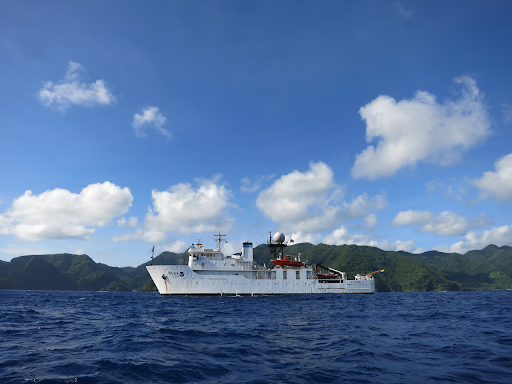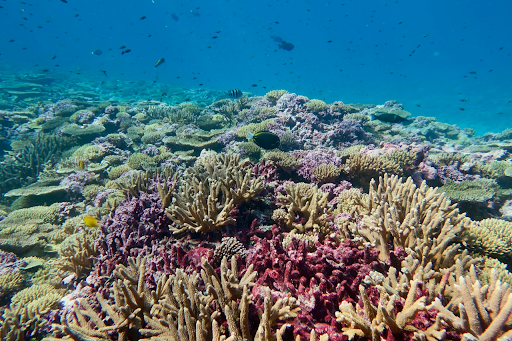
Cruising through our Sanctuaries: Research Cruises

Scientists are rested and boats are fueled. They are ready to start surveying the island of Tutuila. (Photo: NOAA Fisheries)
Research cruises, while essential for getting information from our world’s waterways, are a fun way for scientists, volunteers, and organizations to get a first-hand interaction with the environment beneath the waves. Crew and scientists work around the clock for days, weeks, even months at a time to deploy scientific instruments, collect water samples, and analyze data. You won’t find a water slide or a movie theater on these ships, but they do travel through some of the most remote and amazing places in the world.
The National Marine Sanctuary Foundation supports several research cruise efforts around the sanctuary system. These cruises collect information on ocean properties, animals, and even the seafloor, all to increase our understanding of the sanctuaries we protect.
Long-term monitoring cruises have been occurring annually in the Flower Garden Banks NMS for almost 30 years, making the sanctuary a sentinel site in the Gulf of Mexico that provides baseline information and insights on repetitive patterns and trends. Understanding how a coral reef and its associated community changes over time is essential for adapting our conservation and restoration strategies. One tool that researchers use at the site to get to the deeper parts of the coral reefs is the ROV Mohawk, a remotely-operated vehicle co-owned by the Foundation and one of its partners, the University of North Carolina at Wilmington Undersea Vehicle Program.

Researchers ready the ROV Mohawk for deployment. (Image: NOAA)
The American Samoa Reef Assessment and Monitoring Program (ASRAMP) cruises survey the waters of the National Marine Sanctuary of American Samoa and its surrounding waters for the health of coral reefs, fish populations, oceanographic properties, and climate change indicators. Assessing the state of the sanctuary helps scientists and managers determine how to best conserve the environment.

Imagery taken during an ASRAMP cruise shows corals thriving and supporting a wide diversity of reef fish in the sunny, shallow water at Baker reef. (Image: NOAA Fisheries/Morgan Winston)
Research cruises can also focus on the health and population dynamics of certain species within a study area. Researchers can tag animals to further our understanding of how they migrate, interact, and thrive in locations that we can not easily see. In the Flower Garden Banks NMS, manta rays are tagged to study what part of the sanctuary is important to their feeding or breeding habits.
Off the coast of California in the Greater Farallones, Cordell Bank, and Monterey Bay NMS, the Applied California Current Ecosystem Studies (ACCESS) cruises gather information on a wide array of ecological characteristics to inform sanctuary management. One of their (many) areas focus that the Foundation supports includes researching whale population distribution and how it overlaps with the crab fishery high season to reduce that amount of whale entanglements in fishing gear.
